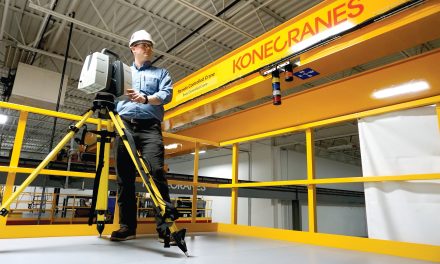 BVC (a Quirepace company) has recently handed over the installation of a centralised vacuuming cleaning system for a worldwide multinational company, who process wheat based materials producing a multitude of products. This is the second order BVC have received from this multinational company in the last couple of years.
BVC (a Quirepace company) has recently handed over the installation of a centralised vacuuming cleaning system for a worldwide multinational company, who process wheat based materials producing a multitude of products. This is the second order BVC have received from this multinational company in the last couple of years.
One production plant produces Gluten and it is for this that BVC have installed a central vacuum cleaning system. It is sized for 2 operators using 51 mm hoses and tools with a maximum hose length of 15 metres. 168 metres of pipe work has been installed throughout the multi floor processing facility, interconnecting 16 x 51 mm hose connection points connected back to a central vacuum plant located on the ground floor.
The materials are removed from surfaces and conveyed to a filter separator; here the materials are segregated from the conveying air and dispensed from the vessel via a rotary valve. Conveying air is passed through 7.5 m2 of fabric filtration media which is cleaned by introducing compressed air at pressure providing a shockwave down the media which dislodges the captured dusts down into the hopper.
As a large amount of material can be recycled/reprocessed it was paramount that this was made possible, the acceptance criteria for this is everything below 2 mm, therefore a flat bed screen was put in place with the two sizes of materials being collected within FIBC below, additionally the screen has a system to separate any ferrous metallic objects that might have been collected and conveyed.
Motive air for the system is generated by an exhauster unit situated at ground level powered by an 11.0 kw motor provided with all necessary ancillaries and located within a fan ventilated acoustic enclosure.
As the plant is serving and installed in an ATEX Zone 22 classified area, equipment was designed and constructed to meet this. As the materials being extracted are potentially explosive and due to site restraints, a traditional explosion vent panel/vent duct could not be used. An indoor explosion protection unit was used, where the explosion will be quenched and any pressure generated will be safely vented away. The rotary discharge valve on the outlet of the separator is certified Zone 20 internally and provides an autonomous flame path barrier.
The operators have been provided with ATEX Zone 22 certified operating hoses and tools manufactured in antistatic plastic and stainless steel. These can be stored on wall mounting racks.
 The sequenced operation of the system is undertaken by a control panel which was also designed and supplied meeting the requirements of the ATEX Directive.
The sequenced operation of the system is undertaken by a control panel which was also designed and supplied meeting the requirements of the ATEX Directive.




